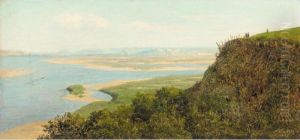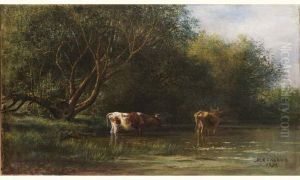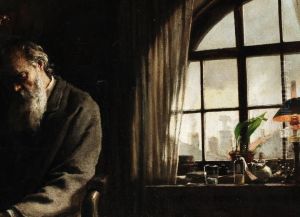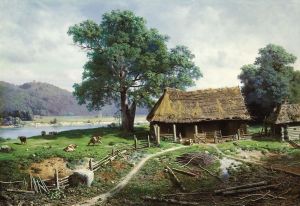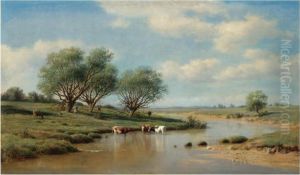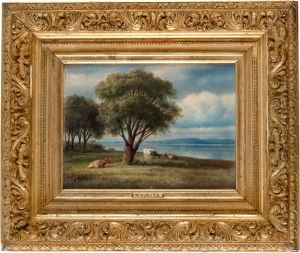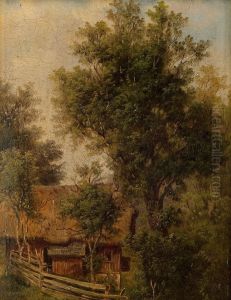Michail Konstantin Klodt Von Jurgensburg Paintings
Michail Konstantinovich Klodt von Jürgensburg (also known as Mikhail Konstantinovich Klodt), was a prominent Russian landscape painter and sculptor associated with the Peredvizhniki (The Wanderers or The Itinerants) movement, which broke away from the formalism of the Russian Academy of Arts.
Born on October 29, 1832, in St. Petersburg, Russia, Klodt came from a noble family with a significant artistic heritage; his uncle was the famous sculptor Peter Klodt von Jürgensburg. Michail Klodt received his initial education in art at the Imperial Academy of Arts in St. Petersburg, where he studied from 1847 to 1858. During his time at the Academy, he was heavily influenced by the landscapes of the Russian painter Alexey Savrasov.
Klodt's artistic career began to flourish in the 1860s. In 1861, he became one of the founding members of the Society for Travelling Art Exhibitions (Peredvizhniki), a group that sought to break the monopoly of the Academy and to bring art to the people, outside the traditional and elite gallery spaces. The Peredvizhniki were known for their realist approach and often depicted the Russian landscape and peasantry with a sense of nationalistic pride and social consciousness.
Throughout his life, Klodt was devoted to landscape painting, and he became renowned for his depictions of the Russian countryside, which he represented with a deep understanding of its changing moods and seasons. He worked extensively en plein air and was particularly adept at capturing the effects of light and atmosphere in his scenes. His works are characterized by a harmonious composition and a delicate, yet expressive, palette.
Klodt received numerous awards for his work, including the title of Academician from the Imperial Academy of Arts in 1864 and later the title of Professor. His paintings were widely exhibited and collected, contributing to the national character of Russian art in the second half of the 19th century.
Michail Klodt von Jürgensburg's legacy is preserved in the form of his works, which can be found in various museums and collections, including the State Tretyakov Gallery in Moscow and the Russian Museum in St. Petersburg. He passed away on May 21, 1902, in St. Petersburg, leaving behind a body of work that continues to be celebrated for its contribution to Russian landscape painting and the larger Peredvizhniki movement.
